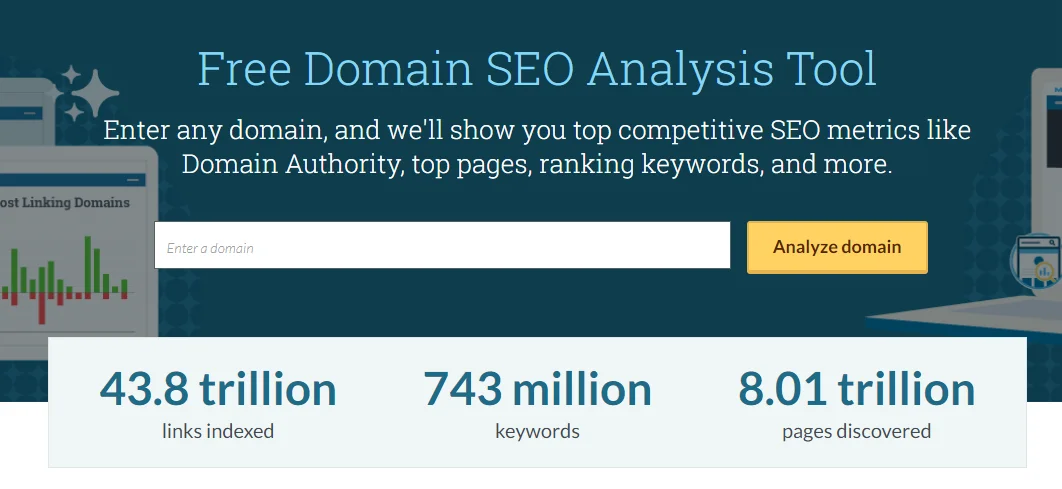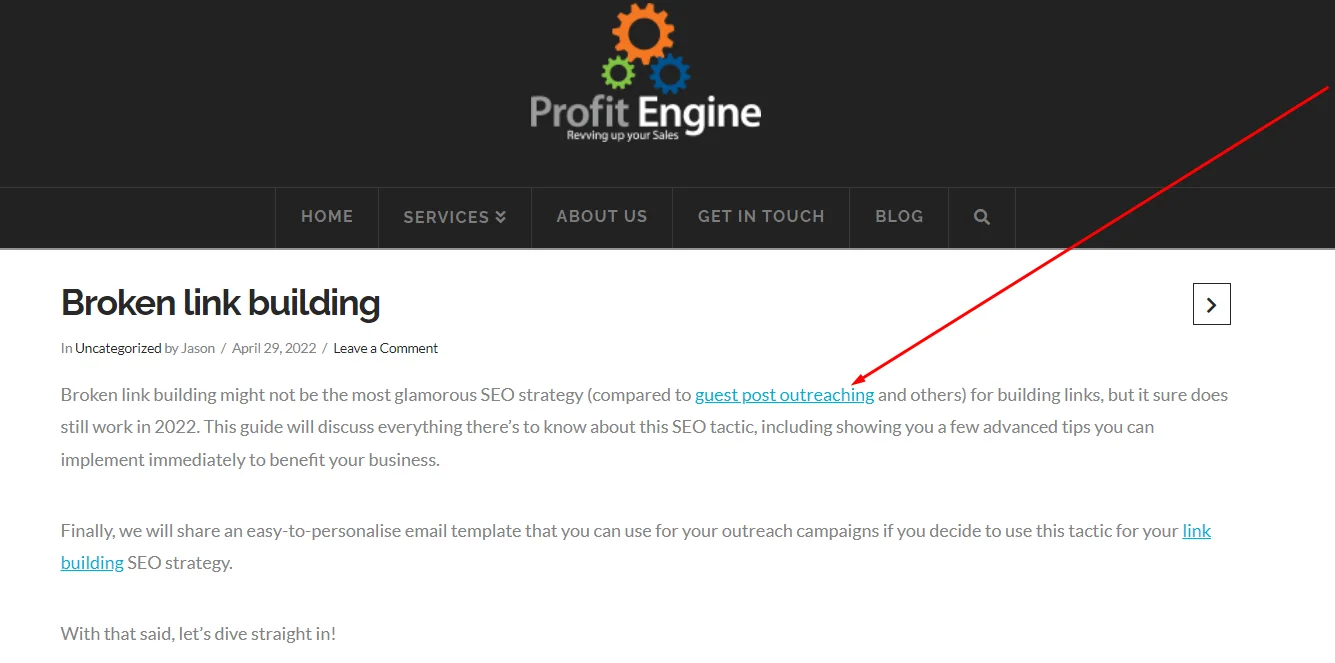
Regardless of what Google or a section of SEOs tell you, link building remains to be one of the greatest pillars of a successful SEO strategy. The importance of Link Building cannot be overstated. The more backlinks you acquire for your web pages, the better the odds that search engines will recognise your website as legitimate and authoritative, and thus give it a boost in the SERPs.
However, simply accruing as much backlinks as possible won’t cut it. Because not all backlinks are equal in the algorithmic eyes of Google. Indeed, search engines place a lot of weight on quality backlinks. That is why, for the most part, quality links influence how much traffic you can drive to your website.
But how do you determine whether or not your link-building campaign is a success? Well, there are several link building metrics you should use to judge the value of a potential link and determine if it’s worth pursuing or not.
In this quick guide, we explore seven key factors you should consider when starting a link building campaign for your online business. Let’s dive in!
Can’t read the whole article right away? Here are the most vital link-building metrics to track:
Continue reading for an in-depth guide on tracking each metric and gain actionable insights to streamline your link-building strategy.
Need help tracking the metrics or identifying improvement areas? Choose the right link building agency.
At Profit Engine, we have over a decade of experience helping online businesses, SEO agencies, and affiliates implement link-building strategies. We provide regular performance reports, including suggestions on how to improve your backlink profile.
Schedule a risk-free call to learn how we can help you track your link-building metrics!

Below are the key advantages of tracking the performance of your link-building strategy:

Follow our simple guide to set measurable link-building goals:

Next, let’s discuss the most essential metrics to track when implementing a link-building strategy for your website:
Domain Authority (DA) is a metric that measures a website’s aggregate value. It takes into account a host of data, including a site’s age, size (how much content it has), popularity, total number of inbound links, etc., giving you a sense of just how high a website's domain authority is on the web.
The SEO gurus at Moz developed the Moz Link Research tool that runs a website’s domain strength on a scale of 0-100. For example, if the Moz crawler indicates a domain authority score of between 91 and 100, it means the site is highly authoritative and a relatively high volume of its backlinks comes from domains that are also considered high-authority.
To ensure successful link building efforts, seek for the linking domains that are considered by search engines as highly authoritative. The more authoritative referring domains are, the more likely that pages from those domains will rank high in the search engine.
This explains why backlinks from big names like Forbes, TechCrunch and The Next Web are regarded so highly in the online world.

Page Authority works pretty much the same way as Domain Authority, except that it only applies to a particular page rather than the entire domain. A quick way to assess the host page strength is using Moz Page Authority tool. You could also use Google’s PageRank, which rates pages on a 0-10 scale, where 10 is the strongest possible score a web page can have.
Getting a link from a high authority host page is such a big win for you especially if it comes from a site with an equally high DA. The higher the page strength is, the more likely it is to boost your site's ranking.
Aside from that, check to make sure the host page has no spammy links pointing to it. The best way to measure spammy links is with Moz Spam score.
Google hates spam and there is a good chance you will be penalised for having a number of them linked to your site.
While links can still be qualitative without being in your exact industry, the thematic relevance of the linking page is also vital. Google places greater value on backlinks coming from websites similar to yours.
To put it in a more practical context, let’s say you run a gardening business. In that case, acquiring a link from a landscaping website is more relevant than from a gaming website. There are two main reasons you should consider building a homogeneous link profile.
First, links from a source that evolves in the same niche as yours will look much more natural to search engines. Despite putting less importance on the anchor text, Google places a lot of weight on the relevance of the linking domain.
The second reason is that you are likely to attract real organic traffic and potential customers based on the relevance of the linking pages. From the above example, someone browsing the landscaping website is more likely to be interested in gardening services and not a gaming website.
You can use link building tools like Ahrefs or SEMrush to check if a potential host site has the authority in your niche. The idea is to look at the top keywords that the website is ranked for and determine if they are related to your site or not.
The position of a link on the host page matters a great deal, especially when it comes to getting clicked. Although Google is able to crawl everything on a site, it values links differently.
If a link is placed in the footer of the page, in the sidebar, or in the ad area, then it has the least chance of getting clicked. Links that are not clicked aren’t of any much importance to your search rankings.
You should position your links somewhere obvious, not only for your readers but also for search engines. You can embed it somewhere near the top of the page, in the main body of the page, or within the blog post itself.
As a rule of thumb, a link is best placed “above the fold”, meaning the reader should be able to find it before scrolling down the page. Such a backlink profile signals to Google and other search engines that it’s truly important for readers and the credibility of the host page is unquestionable.

While we mentioned earlier that the number of links won't guarantee you link building success, it still remains a decisive metric to measure. The total number of links pointing to your website can greatly help with SERP ranking. However, just remember that the link quality is by far better than quantity.
Measure the progress of your link building campaign on a regular basis to see if your links are increasing, decreasing or staying flat.
If they’re increasing, your efforts are paying off. And you can expect your website's rankings to soar. But if you are losing active links or if there is no growth at all, look into where the issues may be and make the necessary adjustments.
You might want to run a comparison between your website and other websites ranking high in your niche to get the picture of what you might be doing wrong.
For example, if you’re looking to rank for the keyword “best used cars under £10,000” and the websites on the first page of SERPs all have over 1,000 links, that tells you how competitive that niche is and what you need to adjust in order to rank among those results.
When it comes to link building campaign, another essential metric to measure is the linking root domains. This represents the number of distinct domains linking to your website.
No matter how many backlinks you acquire, they’re less valuable if they all come from only one domain. For example, if Forbes linked to you five different times, that would be treated as five links from one linking root domain – Forbes.
Multiple backlink profiles from the same domain aren’t telling Google anything new regarding the credibility of your website. This is why it’s better to have five links from five unique domains than five links from only one domain.
A handful of unique domains linking to your website act as a digital thumbs up, telling Google that a significant number of people like and trust your content. As a result, you are more likely to get a higher ranking in the search results and drive more traffic to your website.
You can use Majestic SEO’s site explorer to check both your total number of raw links and linking root domains.

What is anchor text? Anchor text is the actual text that you hyperlink with the URL back to your website. Put otherwise, it is the specific text that people click when they need to be taken to the web page that is linked.
Just because the strict value of anchor text has changed over the years doesn’t mean it’s no longer an important metric for link building. It just means there is need to use a contextual anchor text that is relevant to your business.
There are a few guidelines to follow when writing the anchor text for link building purposes. Your anchor text needs to be:
Generic anchor texts such as “click here” no longer hold any value and you should therefore keep away from them. It is essential to write a relevant anchor text that communicates to Google about the subject matter of the page being linked to.
Let’s say you run a fitness website. If another website links to yours, it’s better to incorporate words like “fitness routine”, “weight regime”, and other variations containing your core keywords. In addition to improving SEO, doing this also influences the reader’s decision on whether to click or not to click.
Need help tracking your link-building metrics? Partner with us!
At Profit Engine, we provide comprehensive backlinking reports to help you track your link-building strategy. Also, our team leverages AI and link-building tools to tailor actionable insights to your website’s SEO needs.
Keep track of your link-building strategy to know what to keep and what to drop. Contact us today!

Follow our step-by-step guide to create comprehensive link-building reports:

Got more questions?
This section addresses common questions we receive about link-building metrics:
There is no timeline for how often you should create a link-building report. You could do it biweekly or monthly.
However, we recommend tracking your metrics every three months to get a bigger picture of your link-building strategy.
Below are effective link building tools to help you track your backlinking metrics:
Here are simple ways to know if your link measurement strategy is working:
Understanding these link building metrics is key to link building success and vital if you are to plan and run your link building campaign in an effective and efficient way. What’s more, these SEO metrics can also help you track your campaign to ensure you get more organic traffic and maintain a good ROI.
If you’d like help with link building and SEO, how about you talk to us? Our team is here to help streamline your link acquisition process and help your business fly higher on SERPs.
Not sure where to start? Get in touch now for a free discovery call with one of our link building experts.